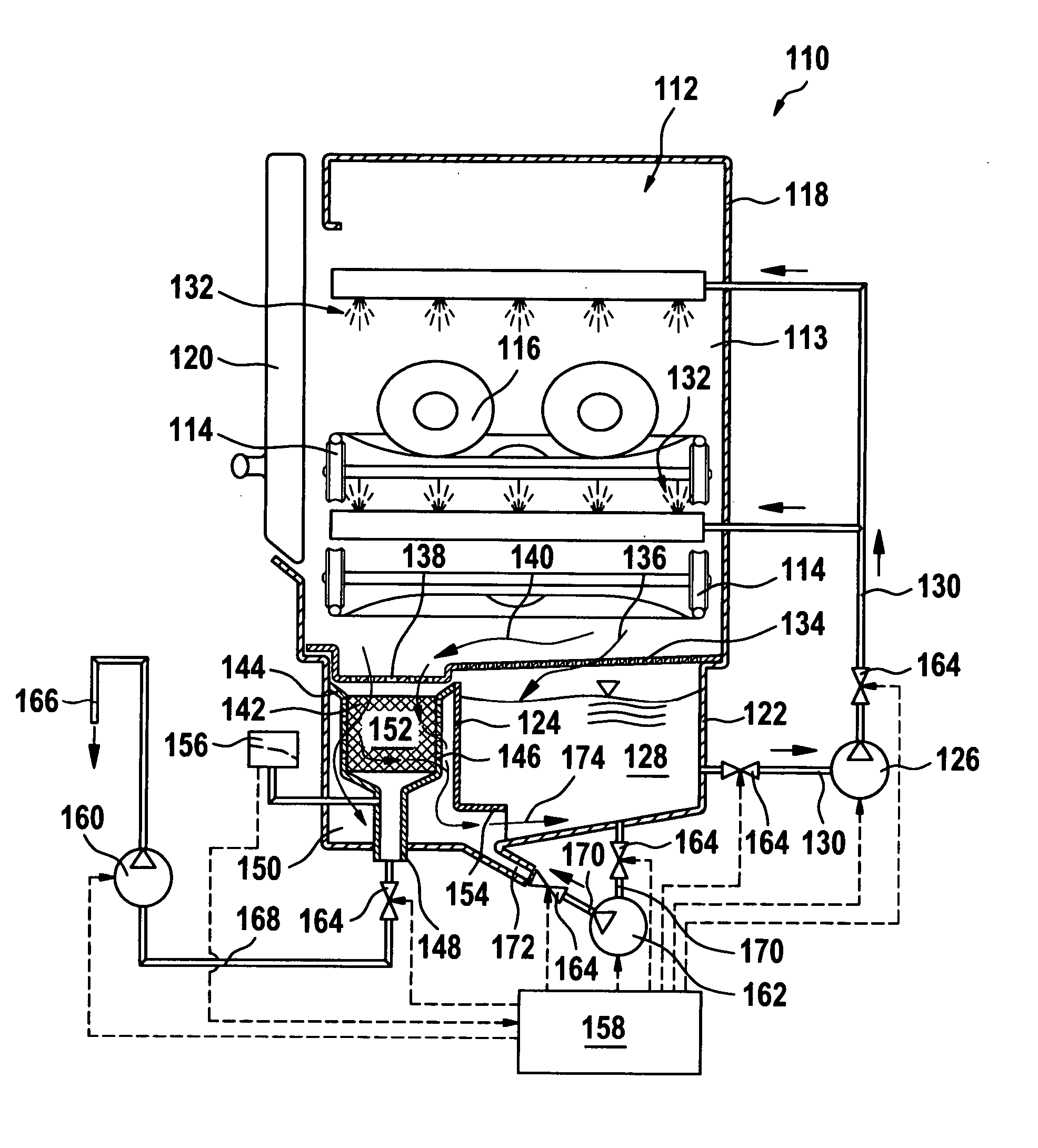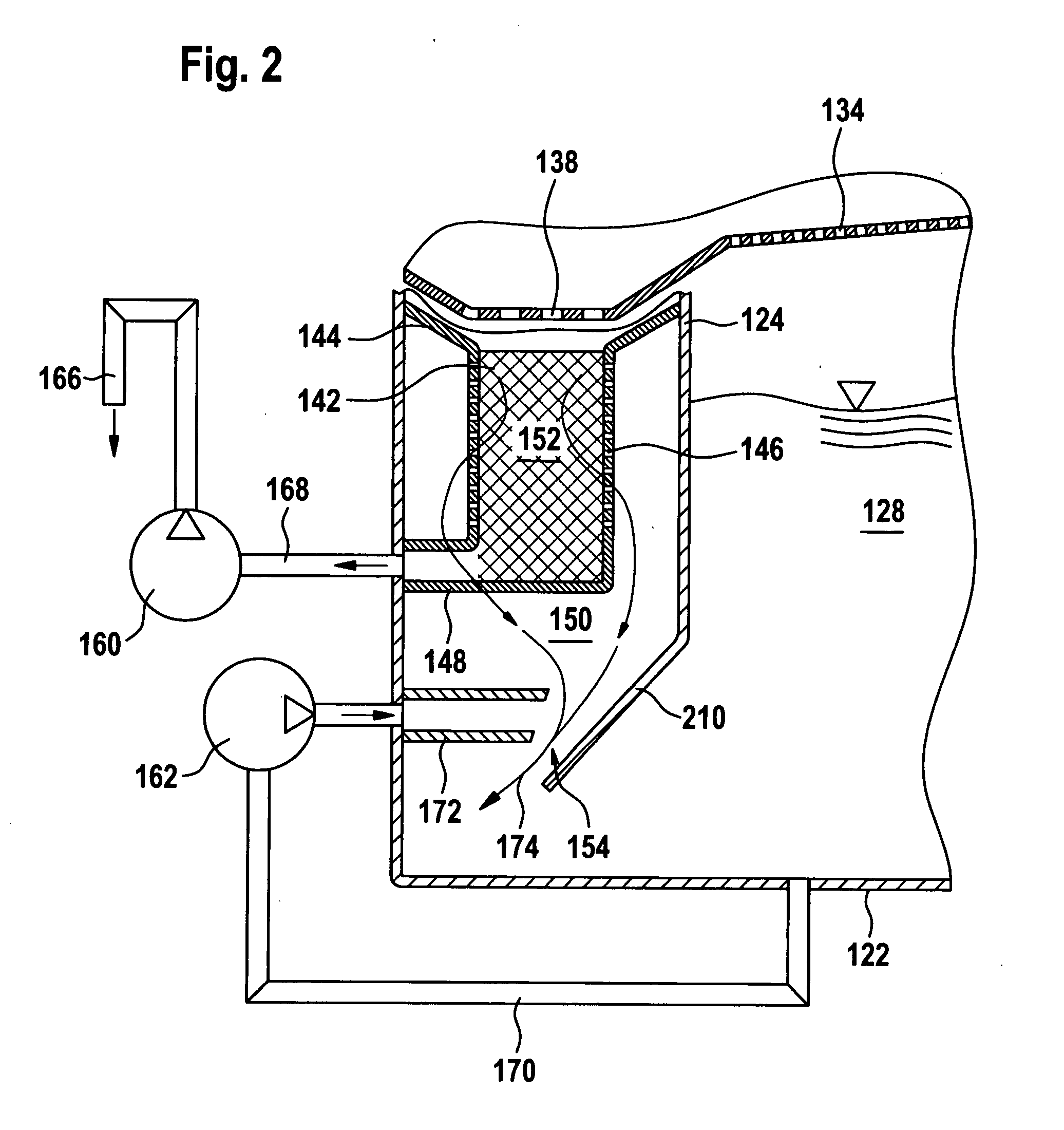Multi-tank dishwasher comprising a backwash device
a backwashing device and multi-tank technology, applied in the field of multi-tank dishwashers, can solve the problems of increasing the dirt content of washing water, reducing the cleaning capacity of washing zones, and filtered out dirt from washing water
- Summary
- Abstract
- Description
- Claims
- Application Information
AI Technical Summary
Benefits of technology
Problems solved by technology
Method used
Image
Examples
Embodiment Construction
[0040]FIG. 1 illustrates diagrammatically a multichamber dishwasher 110, FIG. 1 showing a section through a washing zone 112 of the multichamber dishwasher 110 in a sectional plane perpendicular to a conveying direction of a transport device 114. Various types of transport devices 114 may be envisaged, for example transport devices 114 for belt transport or for basket transport. The multichamber dishwasher 110, in this exemplary embodiment, is designed as a belt transport machine in which a wash batch 116 is transported through the multichamber dishwasher 110 on the transport device 114 designed as a conveyor belt.
[0041] The multichamber dishwasher 110 has a washing chamber 113 with a housing 118 which can opened laterally by means of an access door 120. A washing water storage tank 122 and a filter housing 124 are introduced in the bottom of the housing 118. A washing water circulating pump 126 sucks in washing water 128 via a circulation pipeline system 130 from the washing water...
PUM
| Property | Measurement | Unit |
|---|---|---|
| hole diameters | aaaaa | aaaaa |
| temperature | aaaaa | aaaaa |
| angle | aaaaa | aaaaa |
Abstract
Description
Claims
Application Information
 Login to View More
Login to View More - R&D
- Intellectual Property
- Life Sciences
- Materials
- Tech Scout
- Unparalleled Data Quality
- Higher Quality Content
- 60% Fewer Hallucinations
Browse by: Latest US Patents, China's latest patents, Technical Efficacy Thesaurus, Application Domain, Technology Topic, Popular Technical Reports.
© 2025 PatSnap. All rights reserved.Legal|Privacy policy|Modern Slavery Act Transparency Statement|Sitemap|About US| Contact US: help@patsnap.com



